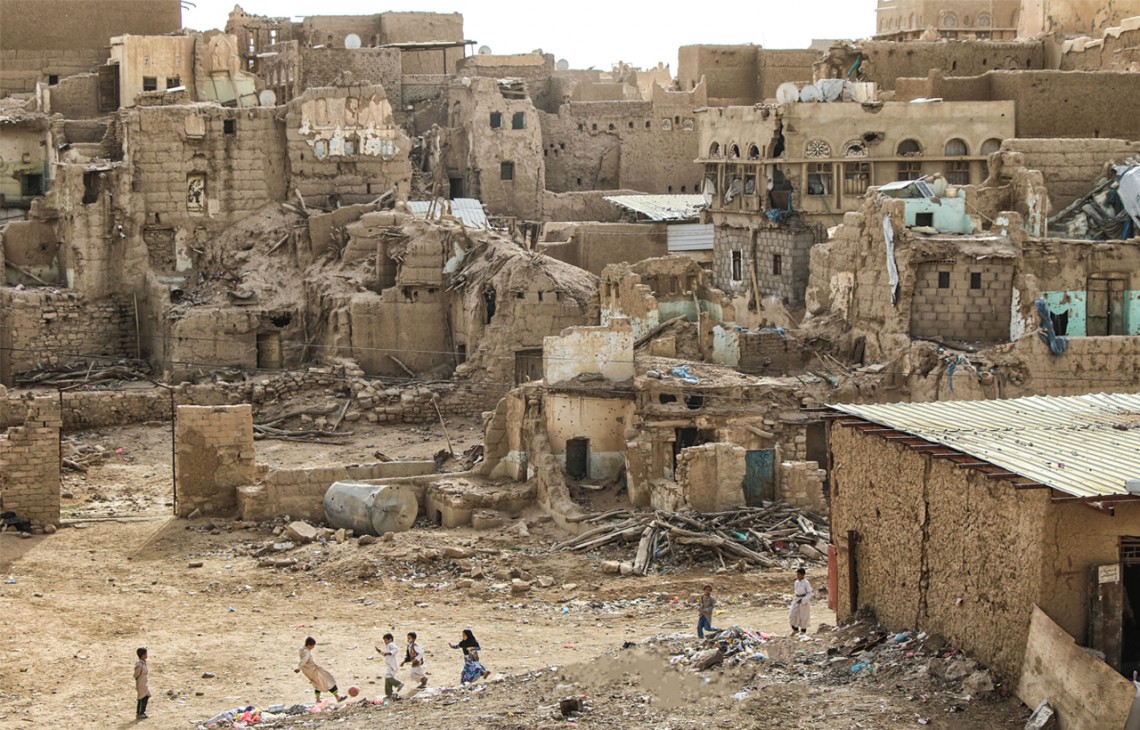
Chronicling the Yemen conflict: 6 photographers tell their stories

The ICRC teamed up with six young Yemeni photographers, Ahmad Al Basha, Karrar al-Moayyad, Saleh Bahlais, Abdallah Al Jaradi, Khaled Al Thawr and Ali Al Sonidar, who chronicled the devastating impact of the Yemen crisis on their respective communities across Yemen.
Sonidar, who grew up in the bustling alleys of the spectacular Old City of Sana'a, developed a knack for photography while observing tourists from all over the world click photographs of the souks, the architecture and the people.
"Their photographs were much more than combinations of lighting and compositions," the 28-year-old photographer says.
Their photos told stories of places and people and I thought that I wanted my photography to do the same: to be humane, to convey a message and to instigate change.
Now, Sonidar is part of a collective of photographers hailing from across Yemen documenting their day to day struggles amid the Yemen crisis. Often, their images are the reason why a starving family can put dinner on the table or a student gets a new backpack.
"I honestly hope to go back to taking the pictures of tourists in the city and of capturing joyful moments," he explains. "But with a lack of tourists in the war-torn city, that is impossible. Now, more than ever, photgraphers like me are needed to tell the story of the war."
In Taiz, with the city witnessing the worst kinds of urban warfare, garbage litters the streets leading to the proliferation of diseases, which were thought to have been eradicated. Abject poverty ravages Yemen's largest cities Sana'a and Aden. In Sa'ada, destruction has become a playground for children and in Marib displaced children challenge deprivation inventing and assembling toys to make the days less heavy.
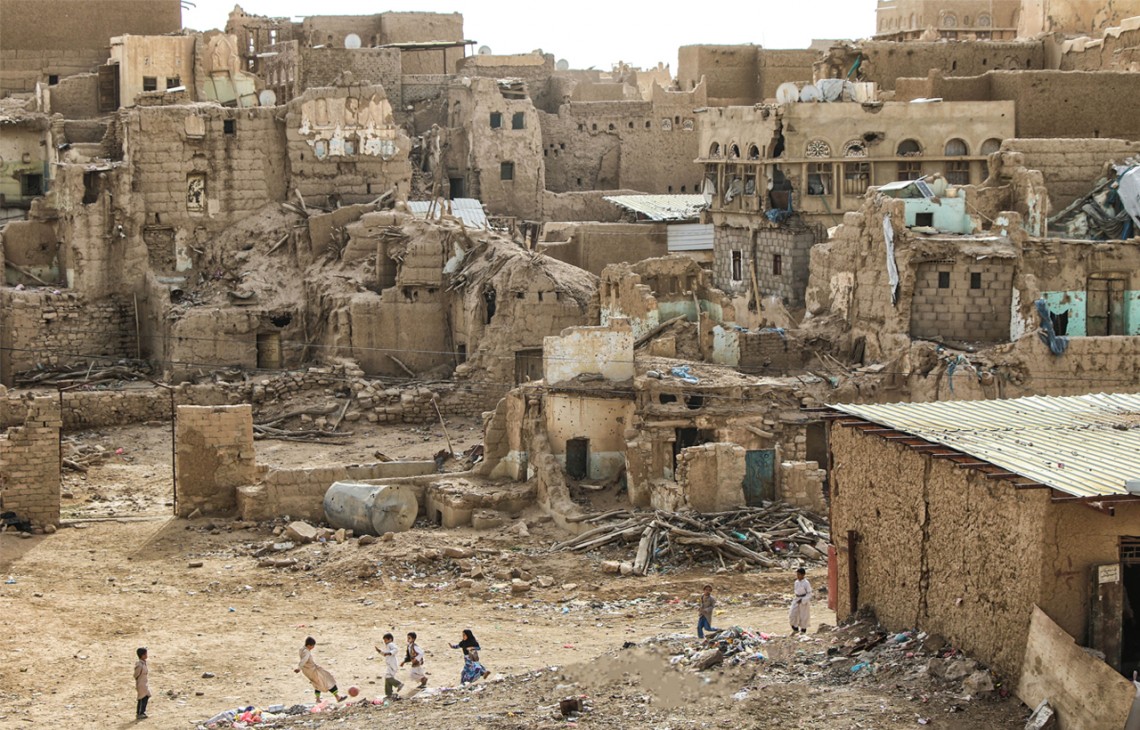
A group of children play football against a backdrop of destroyed houses in Sa'ada, north west Yemen. The northern governorate has witnessed several episodes of violence since 2006 that left behind immense destruction.
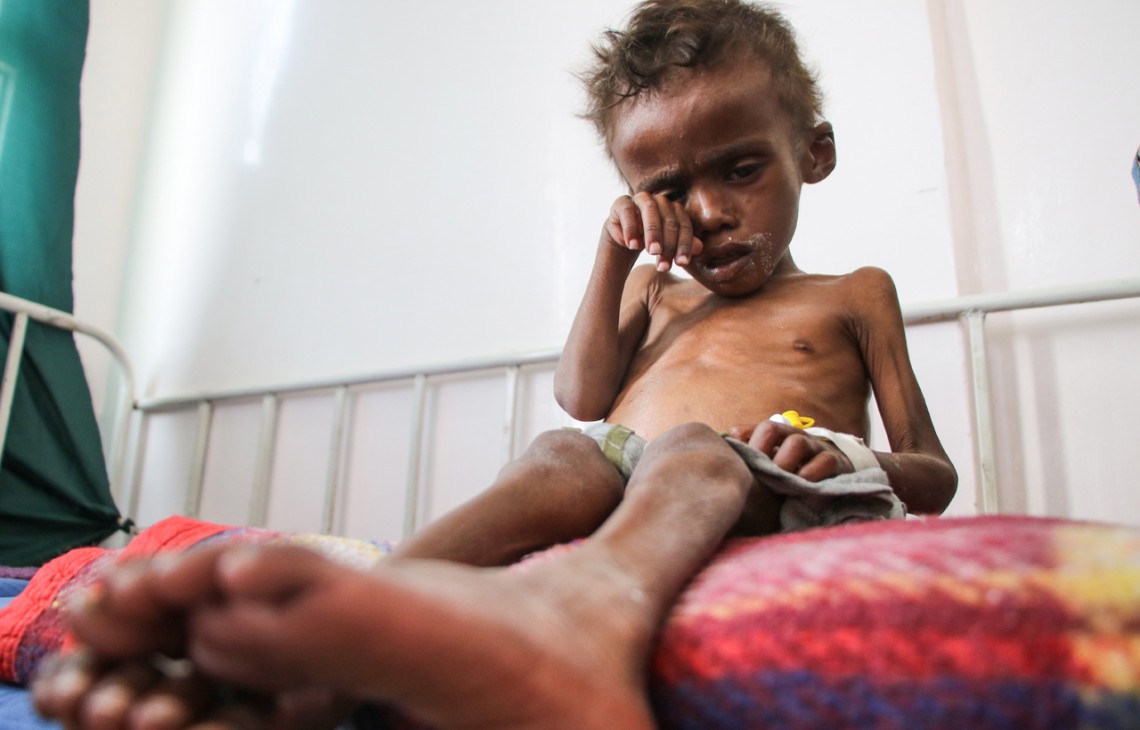
It took a long journey for this severely malnourished infant coming from the village of Saqayn to reach the Al-Salam Hospital in Sa'ada. The protracted conflict and the difficulty of movement of goods have resulted in a major food crisis in Yemen. According to the latest figures, almost 16 million Yemenis are affected by the food crisis engulfing the country.
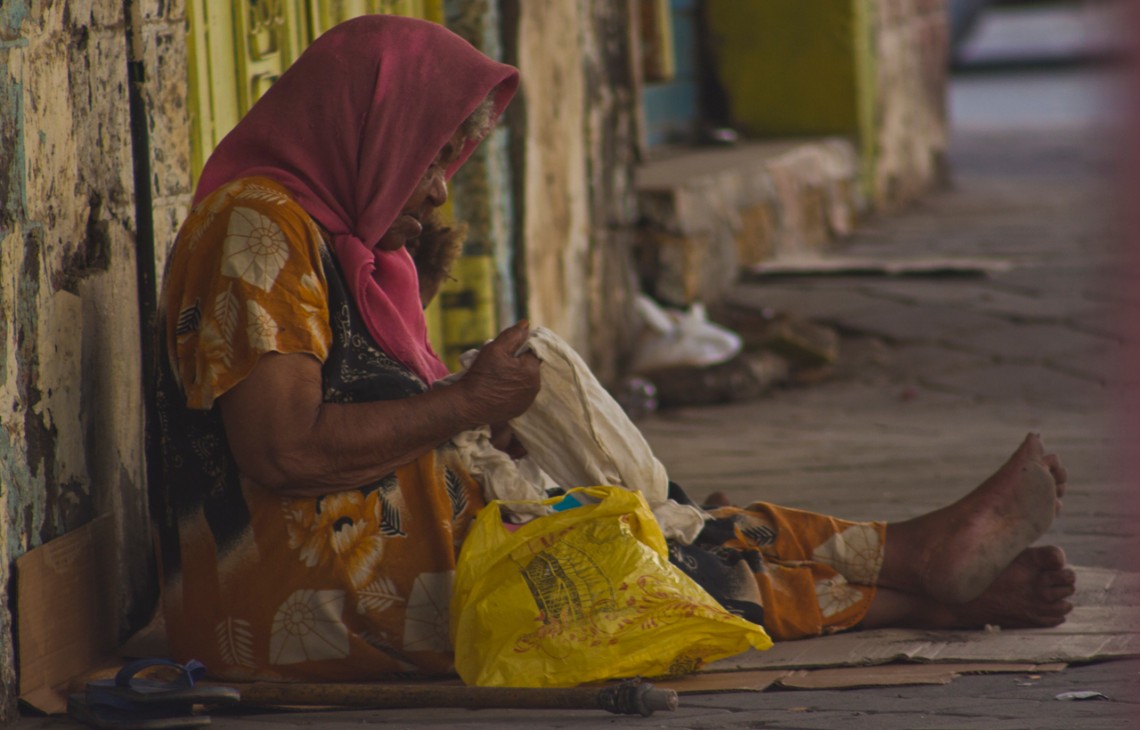
A displaced woman, responsible for her granddaughters as well, checks her food, sitting somewhere in the Crater district of the coastal city of Aden, south of Yemen.
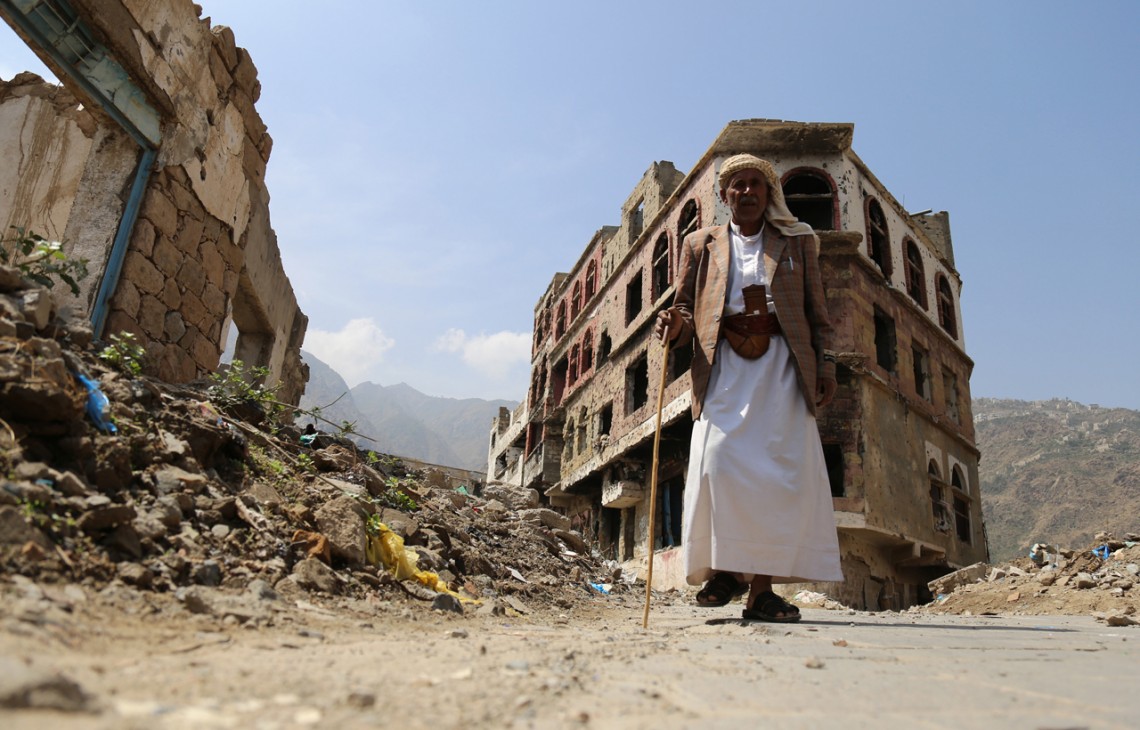
An elderly man is back from inspecting his house in the Al Jahmaliah district of Taiz, central Yemen. Most apartment buildings in the district have been reduced to rubble after two years of intense clashes.
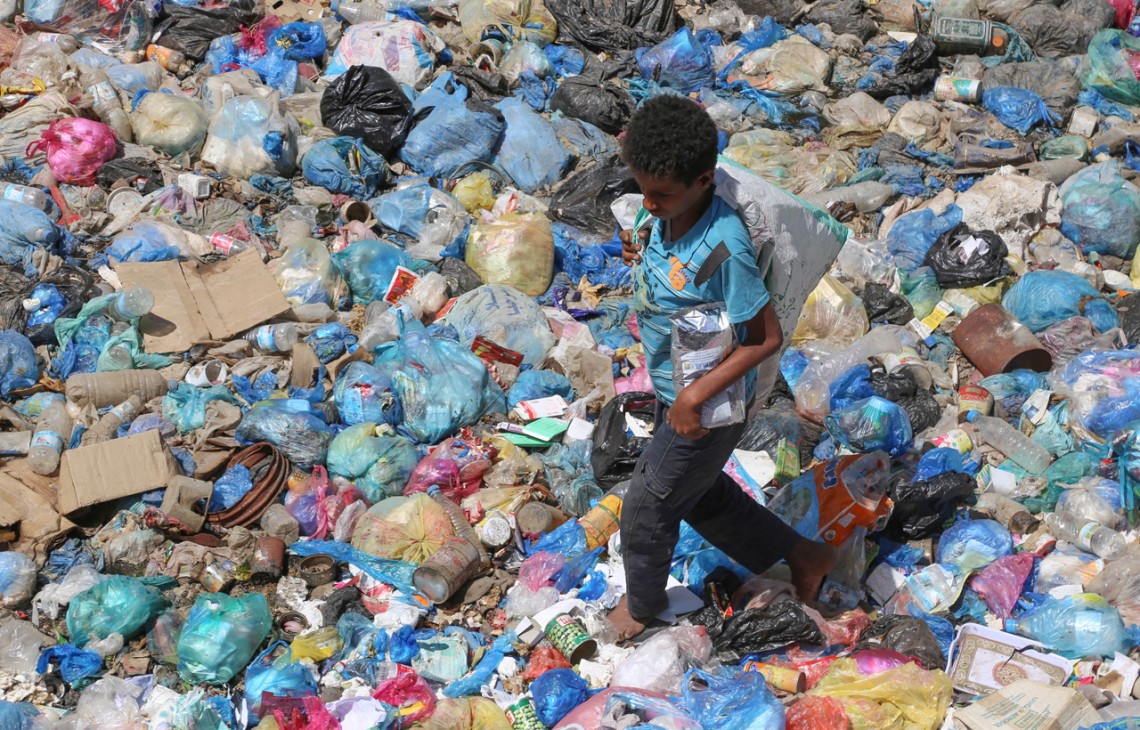
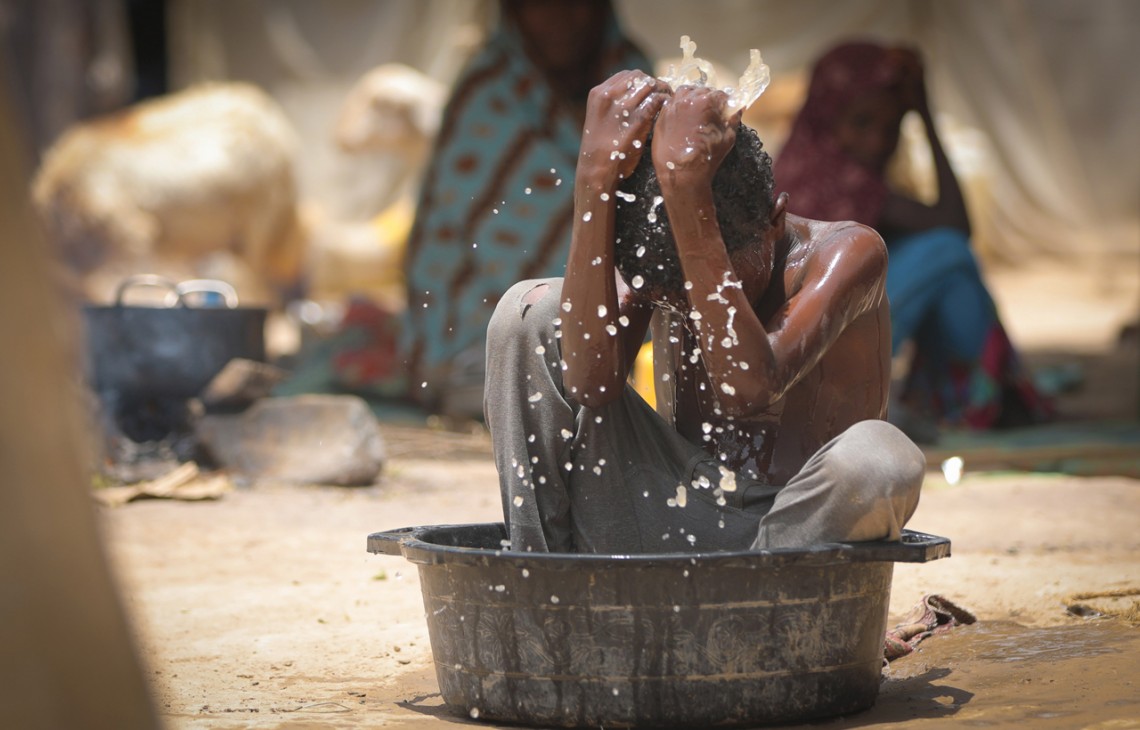
A boy uses dirty water and a small basin to clean himself at the Al Malika camp for internally displaced, east of Taiz City. The conflict has forced roughly two million Yemenis to flee their homes in search of safer realms.
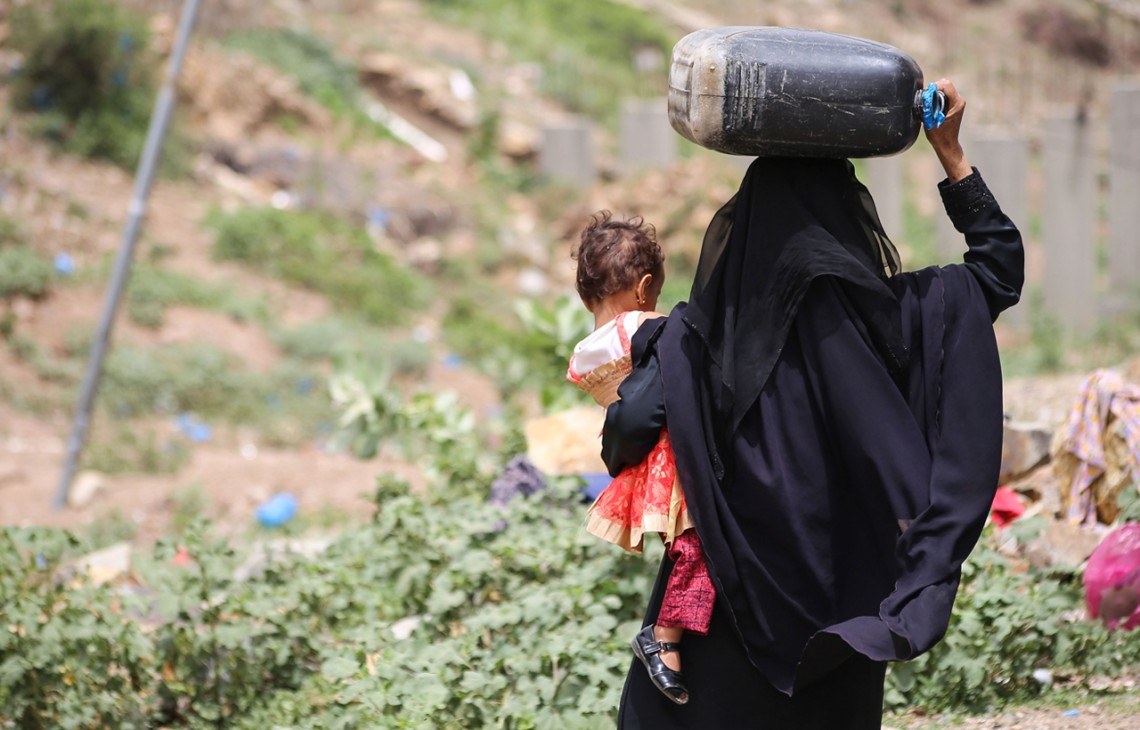
Carrying her infant in one arm and a heavy jerrycan on the head, this woman is forced to walk to the nearest water point, located at least two kilometers from her home in Habeel Salman, west of Taiz City. Yemen's already weak water and sanitation system was rendered incapable of providing the basic serviced due to years of protracted conflict.
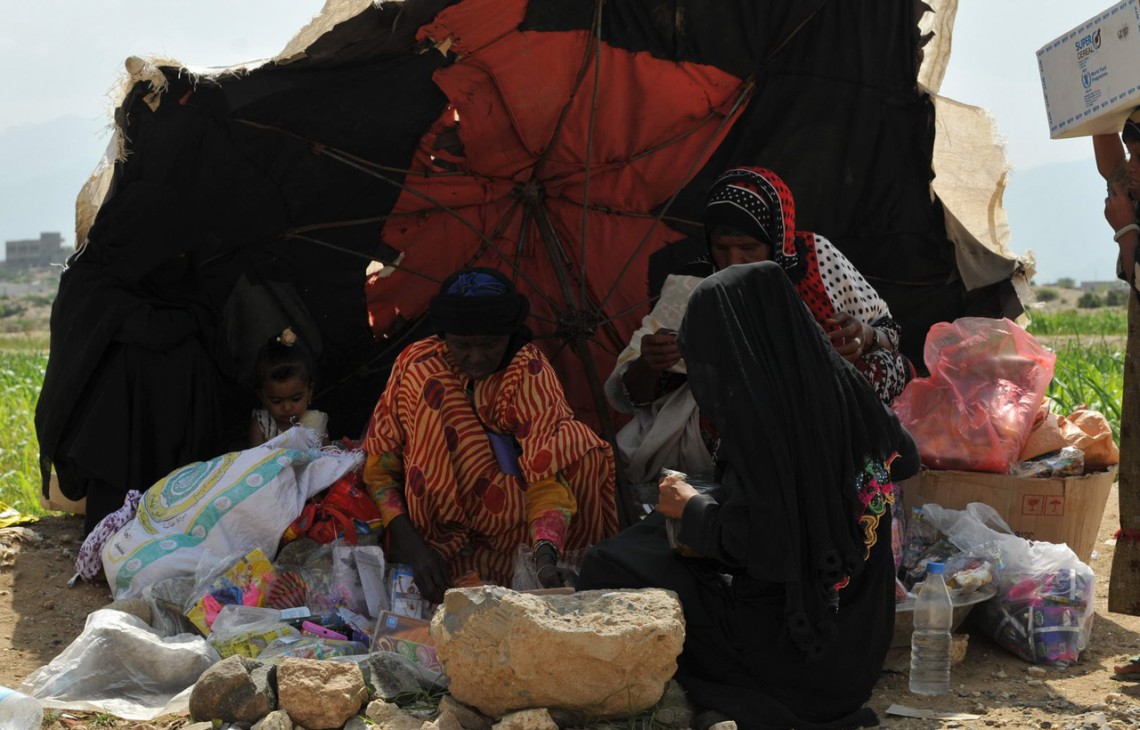
This is all what this group of women from Hajja own: pieces of cloth that make up a wobbly tent and some snacks that they sell to make a living.
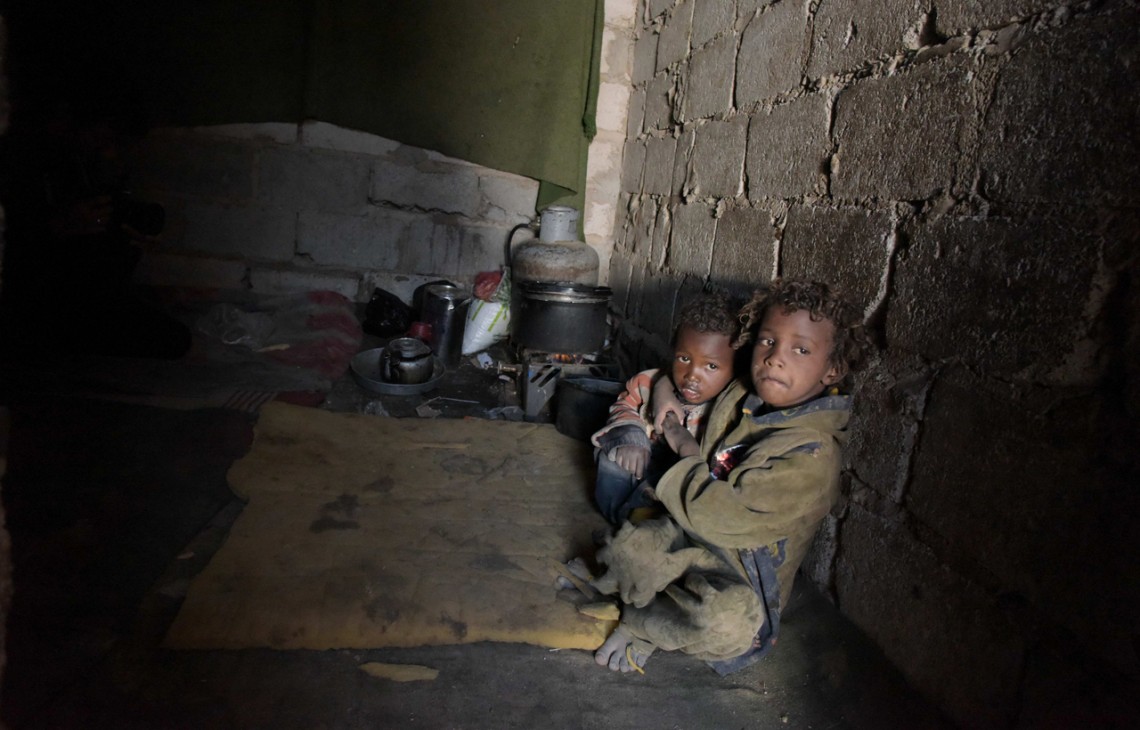
Two siblings from Hodeida wait inside a dark and unventilated shabby shelter their family took refuge in while fleeing the violence along Yemen's Red Sea Coast.
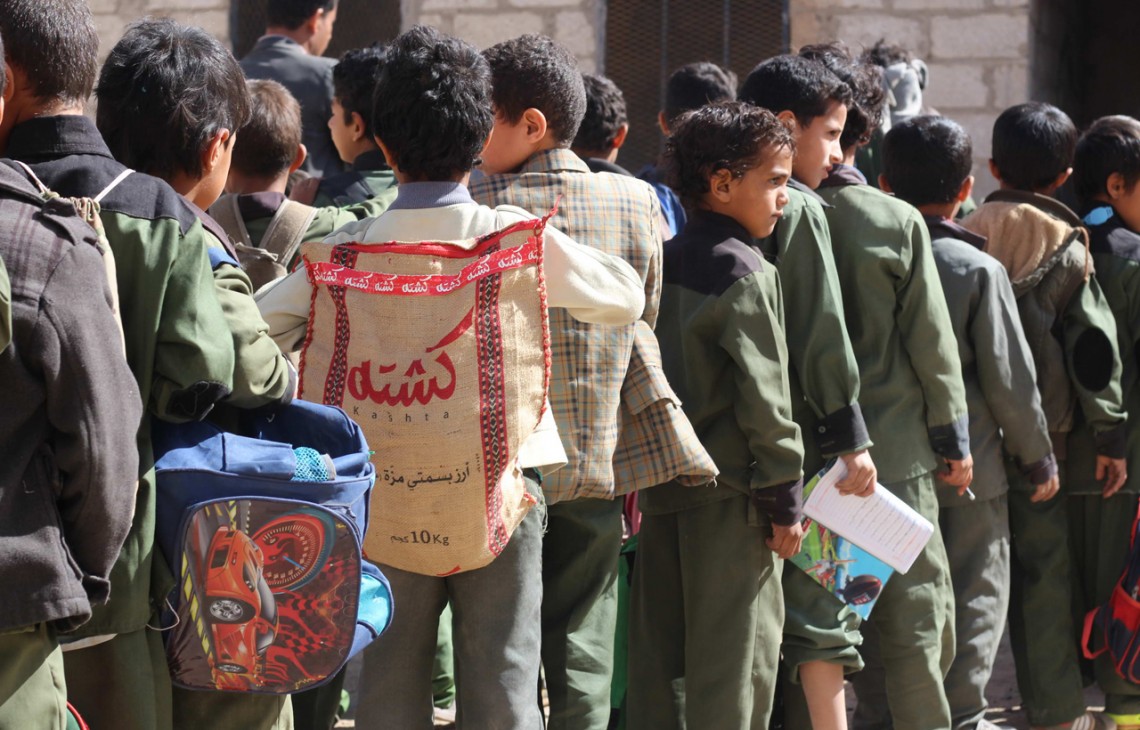
Unable to afford a back-pack, this boy in Sana'a uses a bag of rice to carry his books. According to the latest numbers around 2,500 schools have been damaged or destroyed by the conflict in Yemen. In addition, many schools are being used as shelters for displaced people and some have been taken over by armed groups.
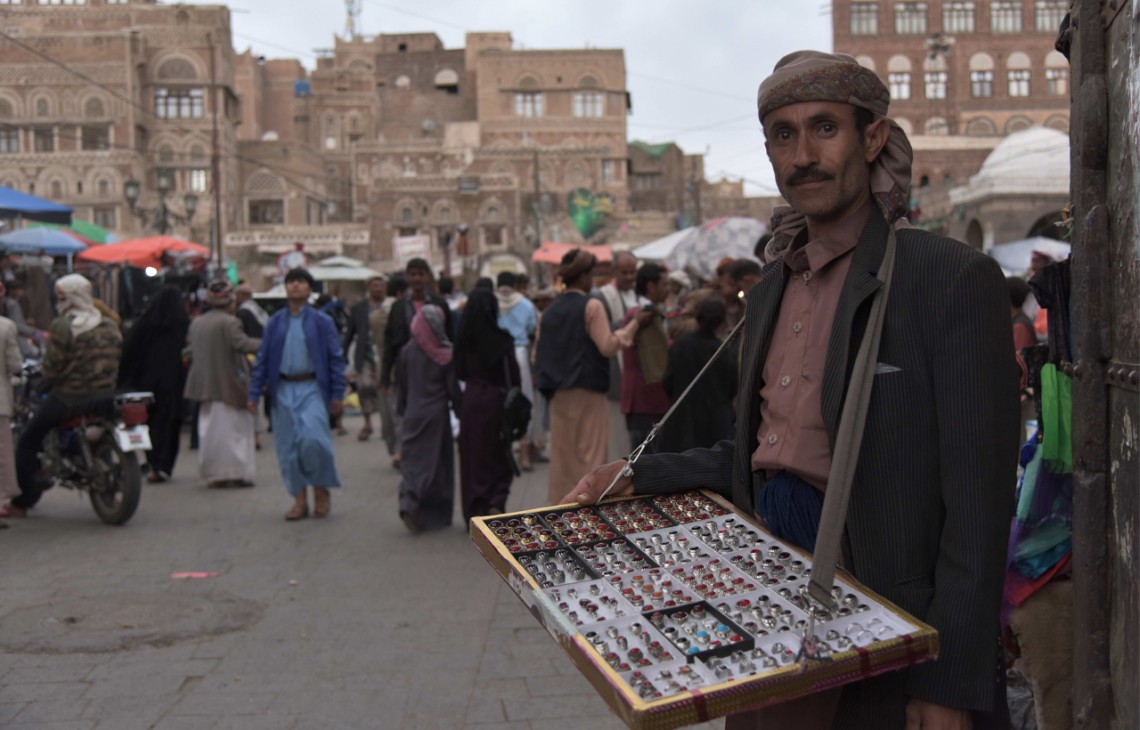
The raging conflict in Yemen destroyed or continues to endanger breathtaking vestiges including Sana'a's ochre-colored Old City. With no more tourists making their way there, the vendors struggle to make ends meet.
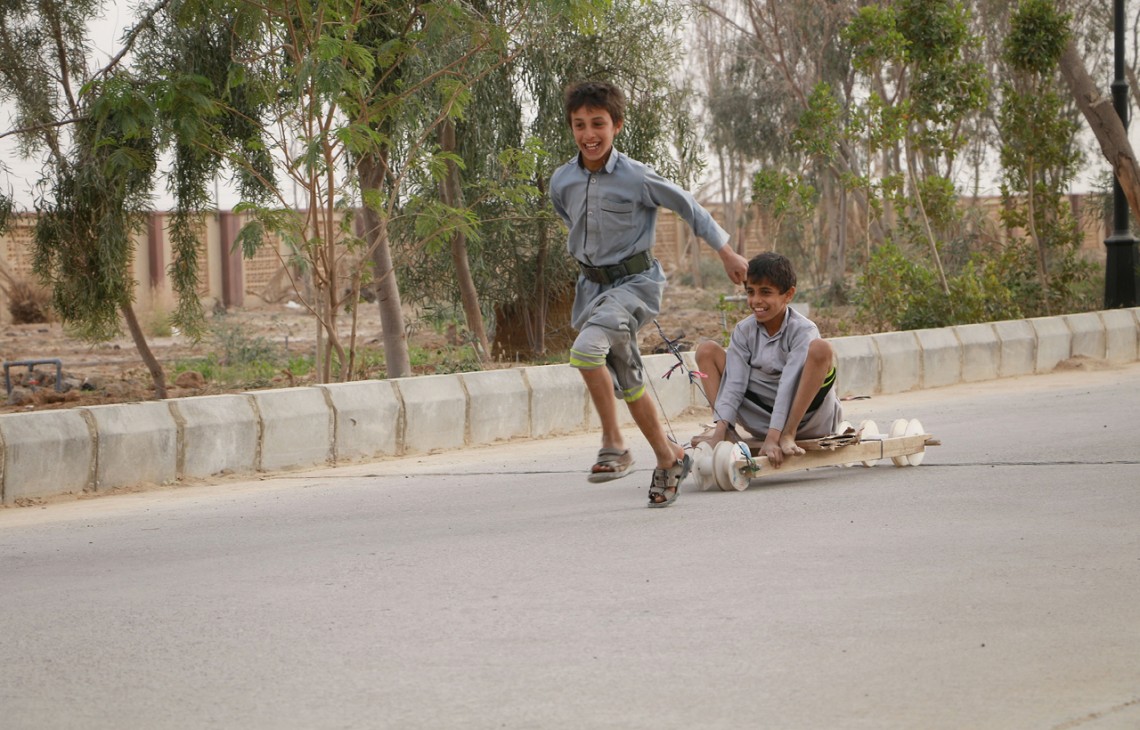
These two children in Marib, east of Sana'a, don't have any toys to play with. They have assembled a three-wheeled cart for some after school fun and games.
In Yemen, the ICRC facilitates access to clean water to millions of Yemenis through our support for water corporations and authorities. We visit detainees and help improve the detention conditions. The ICRC surgical teams treat and provide emergency care to hundreds of thousands of people across the country. This means more than a million displaced people receive various forms of assistance including food, unconditional cash grants and essential household items.
